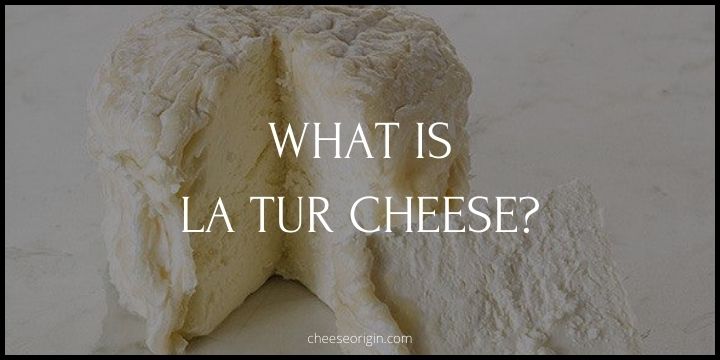What is Manchego? A Guide into Spain’s Most Famous Cheese

Manchego, a cheese as rich in history as it is in flavor, hails from Spain’s arid La Mancha region, known for its windmills and the timeless tales of Don Quixote. This cheese, with its distinctive flavor and texture, has been an integral part of Spanish culture for centuries.
In this guide, we will take you on a journey straight to the heart of La Mancha, exploring every nook and cranny of the Manchego story. From the rustic farms where it all begins, through the meticulous aging process, to the very moment when the cheese knife slices through that characteristic herringbone rind, revealing the creamy, nutty goodness within.
We will delve into the different variations of Manchego, learn how to distinguish authentic Manchego from imposters, and even share tips on how best to savor this iconic cheese.
So whether you’re planning a wine and cheese party, looking for culinary inspiration, or simply intrigued by this Spanish delicacy, this guide is your one-stop resource.
Quick Facts About Manchego
| Fact | Description |
|---|---|
| Origin | Spain, specifically the region of La Mancha |
| Milk Source | Sheep’s milk, from the Manchega breed |
| Texture | Firm and compact, with a buttery texture |
| Flavor | Nutty and tangy, with a distinctive sheep’s milk flavor |
| Color | Creamy to light yellow |
| Aging Process | Aged for at least 60 days for small cheeses and 105 days for large ones. Some are aged up to 2 years |
| Protected Designation of Origin | Manchego has PDO status in the European Union |
| Historical Origins | The production of Manchego dates back to the Bronze Age |
| Uses | Served as a snack, paired with fruit or used in cooking. It’s also often served with Spanish quince paste (membrillo) |
Savoring History: The Rich Tradition of Manchego Cheese
Manchego is a renowned cheese that hails from the La Mancha region of Spain. It’s traditionally made from the milk of Manchega sheep, a breed native to the area. The history of Manchego cheese stretches back for millennia, with origins rooted in the high, flat lands of La Mancha.
The cheese is an integral part of Spanish culture and identity, with its cheesemaking tradition dating back to the Bronze Age. When Spanish conquistadors landed in Mexico, they even brought with them the art of making Manchego cheese.
Since 1984, Manchego Cheese has been classified as a Denominación de Origen (DO) cheese in Spain, meaning it must be produced in a specific region using traditional methods. It also holds a Protected Designation of Origin (PDO) status in the European Union.
The production process of Manchego has remained largely unchanged over the centuries. Authentic Manchego must be produced in the La Mancha region of Spain, using milk only from Manchega sheep. The cheese is typically aged between 60 days and 2 years, which contributes to its unique and varied flavor profiles.
Manchego cheese stands as a testament to Spain’s rich culinary history and continues to be enjoyed by cheese lovers around the world today.
What is Manchego cheese best for?
Known for its distinctive flavor and texture, Manchego is extremely versatile and can be used in various ways. Here are a few suggestions:
- Cheese Platters: Manchego’s unique taste and texture make it an excellent choice for cheese boards. It pairs well with a variety of fruits, nuts, olives, and charcuterie.
- Cooking: Manchego can be used in numerous dishes. It’s great in salads, melted over bread, or grated onto pasta. Its rich, nutty flavor enhances the taste of many recipes.
- Pairing with Wine: Manchego pairs excellently with many wines. Younger Manchegos go well with lighter wines like a crisp white or rose, while aged Manchegos pair wonderfully with robust reds or even a sherry.
- Desserts: Believe it or not, Manchego can also be included in desserts. Pair it with honey or quince paste for a sweet and savory treat, or incorporate it into a cheesecake recipe for a unique twist.
- Tapas: In Spain, Manchego is often served as tapas. Small slices of the cheese are served with a variety of accompaniments, allowing the flavors to sing.
Also read: A Comprehensive Guide to Enjoying Cheese Platter with Wine
How Manchego Differs from Other Popular Cheeses: Parmesan, Gouda, & Mozzarella
| Feature | Manchego | Parmesan | Gouda | Mozzarella |
|---|---|---|---|---|
| Origin | La Mancha, Spain | Parma, Italy | Netherlands | Campania, Italy |
| Milk Source | Manchega Sheep | Cow | Cow | Water Buffalo (traditional) or Cow (more common) |
| Taste | Creamy, slightly nutty with a distinctive tangy note | Nutty and savory | Mild, sweet, and slightly fruity | Mild and slightly sweet |
| Texture | Firm but supple, less crumbly | Hard and grainy | Smooth and creamy | Soft, moist, and elastic |
| Aging Process | 60 days to 2 years | Typically aged 12-36 months | Varies, can be eaten young or aged for many years | Usually consumed fresh within few hours to a few days |
| Pairings | Pairs well with fruits, nuts, olives, charcuterie, and a variety of wines | Often paired with pasta, risotto, soups, and grated over dishes | Often paired with fruit, nuts, and a range of wines from light whites to full-bodied reds | Often paired with tomatoes, basil, and olive oil in salads or on pizzas |
| Use in Dishes | Cheese platters, salads, tapas, desserts | Grated over pasta, risotto, soups, used in pesto | Sandwiches, cheese platters, salads, cooking | Salads, pizzas, pasta dishes, sandwiches |
Click here to read our in-depth guide: Parmesan, Mozzarella, Gouda
What does Manchego cheese taste like? Tasting notes
- Texture: Manchego has a firm but supple texture. It’s less crumbly than many hard cheeses, with a pleasing buttery mouthfeel.
- Taste: The taste of Manchego can vary depending on its age. Young Manchego (aged around 60 days) tends to have a creamy, mild flavor with a slight tanginess. As it ages, the flavor deepens, becoming more intense, nutty, and savory.
- Aroma: Manchego has a distinctive aroma that is slightly pungent but not overpowering, with hints of the grass and hay from the pastures where the Manchega sheep graze.
- Aftertaste: The finish is typically lingering and pleasant with a slight sweetness.
- Pairings: Manchego pairs beautifully with fruits like pears and figs, nuts, olives, and charcuterie. In terms of wine, it can be served with a variety of options from crisp white wines to full-bodied reds. It’s also excellent with sherry.
Note: tasting notes can be subjective and can vary based on the specific batch of cheese and its aging process.
Does Manchego cheese melt well?
Manchego cheese does melt, but it may not melt as smoothly as cheeses known for their melting properties like Mozzarella or Cheddar.
Manchego is a semi-hard cheese, and while it can soften and become more pliable with heat, it doesn’t typically become as gooey or flowy as some other cheeses.
However, it can still be used in cooked dishes where a mild, nutty cheese flavor is desired.
It can be sliced thin and melted on top of a dish, grated into a sauce, or even mixed into a fondue. The flavor of Manchego can complement many dishes well, adding a unique touch to your culinary creations.
Can you eat the coating/rind on Manchego cheese?
The outer coating of Manchego cheese, or the rind, is generally not eaten. It’s made from a wax or plastic material that’s intended to protect the cheese during aging and is not designed for consumption.
However, beneath the hard outer rind, there can be a firmer layer of cheese that is still edible and often has a more intense flavor than the rest of the cheese. This part can be eaten if you prefer, but many people choose to remove it along with the outer rind.
It’s always important to remove the rind before grating or melting the cheese, as it will not melt or incorporate into dishes in the same way as the cheese itself.
Manchego Pairing Guide
Food Pairings:
| Food | Pairing description |
|---|---|
| Fruits and Nuts | Manchego pairs wonderfully with fruits like apples, pears, grapes, and figs. You can also pair it with nuts like almonds and walnuts for a delicious snack. |
| Bread and Crackers | A slice of rustic bread or a crisp cracker serves as a great base for this flavorful cheese. |
| Charcuterie | Spanish cured meats like chorizo or jamón serrano complement the rich flavors of Manchego. |
| Honey and Quince Paste | Drizzling honey over Manchego or serving it alongside quince paste (also known as membrillo) can bring out its nutty flavor. |
| Olives | The saltiness of olives complements the creaminess of Manchego. |
Also read: 11 Best Crackers that Pair Well with Cheese
Beverage Pairings:
| Pairing Category | Description |
|---|---|
| Verdejo Wines | Verdejo wines are aromatic, often soft, and light-bodied. They smell like a big bowl of citrus and green apples. |
| Light, Dry Wines | Manchego pairs well with a variety of light, dry wines. Chardonnay, Cava, and Tempranillo are some examples. |
| Non-Alcoholic Beverages | Non-alcoholic drinks such as lemonade can also pair with cheese. |
| Beer | Depending on the age of the Manchego, it can be paired with beer. |
| Whiskey | Manchego cheese can also be paired with whiskey. |
| Green Tea | Manchego is nutty and can sometimes be a bit gamey, so it can be mellowed by green tea. |
Why is Manchego cheese so expensive?
Manchego is considered expensive for a number of reasons:
- Sheep’s Milk: Manchego is made from the milk of the Manchega sheep breed. Sheep’s milk is more expensive than cow’s milk due to lower production levels.
- Production Process: The traditional process of making Manchego involves manual labor, which increases the cost.
- Aging Process: Manchego cheese is aged for a period of time, which can range from 60 days to two years. The longer the cheese ages, the more intense the flavor becomes, but this also increases the cost.
- Geographical Limitations: Manchego cheese is a product of Spain and is only produced in the La Mancha region. This geographical limitation can contribute to the cost.
- Quality and Taste: Many consumers believe that the quality and taste of Manchego cheese justify its higher price.
The Pros and Cons of Manchego
Benefits:
- Unique Flavor: Manchego has a distinctive, rich, and tangy flavor that many people enjoy.
- Versatility: It can be used in a variety of dishes, from tapas to desserts.
- Nutritional Value: Manchego is high in protein and calcium, and also contains a good amount of vitamin A.
- Aging Variety: It comes in different aging periods, each offering a distinct texture and flavor.
Drawbacks:
- Cost: Manchego is more expensive than many other cheeses due to the factors mentioned earlier.
- Accessibility: Depending on where you live, it might be difficult to find authentic Manchego.
- High in Fat: While it’s high in beneficial nutrients, Manchego is also high in fat.
Manchego Nutrition Facts
The nutritional content for 100 grams of Manchego cheese:
| Nutrient | Quantity |
|---|---|
| Calories | 321-423 kcal |
| Protein | 24.69-25g |
| Total Fat | 25-36g |
| Total Carbohydrate | 0g |
| Dietary Fiber | 0g |
| Sugars | Not Specified |
| Calcium | Not Specified |
| Vitamin A | Not Specified |
Frequently Asked Questions
1. Do you have to refrigerate Manchego cheese?
Yes, it is recommended to refrigerate Manchego cheese for optimal storage and preservation. Although it technically doesn’t require refrigeration if stored in a cool, dark area, placing it in the refrigerator will extend its shelf life and maintain its quality.
Once opened, Manchego cheese can last for about 2-3 weeks in the refrigerator. It should be stored in a plastic container or wrapped tightly in plastic wrap or tin foil to prevent exposure to air, which can cause it to spoil faster.
If you need to store it for a longer period, vacuum-sealing and freezing can allow Manchego cheese to last up to six months.
2. What is the white stuff on Manchego cheese?
The white substance that you may find on Manchego cheese isn’t a cause for concern, but rather a sign of quality and proper aging.
This white substance is commonly known as cheese crystals or calcium lactate. These are naturally occurring and form when lactic acid in the cheese interacts with calcium.
They can give the cheese a slightly gritty texture, but they’re perfectly safe to eat and are often considered a sign of a well-aged cheese.
However, it’s important to differentiate these harmless crystals from mold. If the white patches are fuzzy or spread across the cheese, it might be mold.
3. Is Manchego cheese bad for cholesterol?
Manchego cheese does contain cholesterol, with a serving having around 20 mg of cholesterol (source).
However, it’s important to note that consuming cheese, including Manchego, in moderation as part of a balanced diet can potentially aid in lowering cholesterol levels.
A study cited by Body+Soul suggests that certain types of cheese, including Manchego, may not be off-limits for individuals with high cholesterol.
While cheese can be high in saturated fat and salt, which could lead to high cholesterol if consumed excessively, there is no clear link between cheese consumption and increased cholesterol, as per the USDA Dietary Guidelines from 2015.
Thus, while Manchego cheese does contain cholesterol, whether it’s bad for your cholesterol levels largely depends on your overall diet and the amount you consume.
4. Can you cut the mold off of Manchego cheese?
Yes, you can cut the mold off of Manchego cheese and safely consume the remaining cheese. When mold appears on hard cheeses like Manchego, it typically doesn’t penetrate deeply and is therefore removable.
To safely remove mold from your cheese, use a clean knife to cut off at least 1 inch around and below the mold spot.
Be careful not to touch the mold with the knife to avoid cross-contamination.
After the mold has been removed, re-cover the cheese in fresh wrap to prevent further mold growth.
However, if the cheese is crumbly, shredded, or sliced, or if it’s a soft cheese like Brie, it should be discarded if mold appears.
5. How do you pronounce the word Manchego?
The word “Manchego” is pronounced as man-CHAY-go. It’s a Spanish word, so the ‘ch’ is pronounced like ‘ch’ in ‘chair’, and the ‘e’ in the second syllable is pronounced like ‘ay’ in ‘day’. The stress falls on the second syllable – CHAY.
Also read:
- The Ultimate Guide to Colby Cheese: America’s Own Dairy Delight
- Cheese Curds: The Unsung Heroes of the Dairy World
- Gorgonzola: A Guide to Italy’s Beloved Blue Cheese
- Cheese Balls 101: A Journey through Flavors and Textures
- Is Processed Cheese Good or Bad? Let’s Find Out!
- What Kind of Cheese is Used on Nachos?
- What Pairs Well with Cheddar: The Ultimate Guide





